The winners of this year’s American Institute of Architects’ Committee on the Environment (AIA-COTE) green building projects go beyond xeroscaping to re-creating native habitats for storm management and taking co-generation to the next level.
Here are several from their top 10:
1315 Peachtree Street, Perkins+Will architects 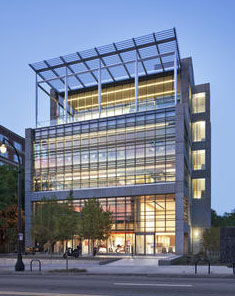
A midtown Atlanta building built in 1986 now is a high-performance office that incorporates a daylit open office plan that runs on a trigeneration system (combined heating, cooling, and power), along with solar PV and a rainwater catchment system.
ASU Polytechnic Academic District, Lake|Flato Architects
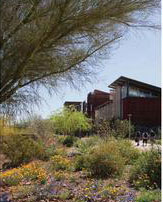
A decomissioned Air Force base near Phoenix, Arizona was transformed into a pedestrian-oriented campus that celebrates the desert landscape. Five LEED-Gold buildings are linked by a series of portals and arcades, and longstanding flooding issues were resolved by replacing asphalt and concrete with native habitats.
Music & Science Building, Hood River Middle School, Opsis Architecture 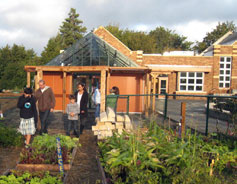
This public school in Hood River, Oregon, incorporated a variety of permaculture strategies such gardens and a greenhouse where students grow plants using water from their "living machine" on-site wastewater plant, along with solar PV and extensive daylighting. Its objective was to create a public building that fuses sustainable design with sustainability curriculum.
Iowa Utilities Board Office of Consumer Advocate, BNIM 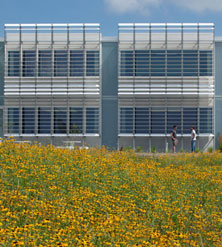
In Des Moines, Iowa, this budget-conscious building, on a former landfill, is extremely energy efficient and protected from more frequent heavy floods by re-creating native prairie habitat that treats stormwater on-site.
University of California-Merced Campus, UC-Merced
The first new campus in 40 years in the UC system, it aims to be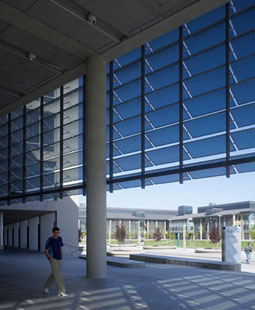 the first net-zero energy and waste campus in the US by full build-out in 2020. It sets LEED-Gold as the minimum for all structures, connects them all with pedestrian arcades, and an on-site solar PV farm generates 20% of electricity. The car-free campus will be edged by 30,000 acres of permanently preserved vernal pool grasslands.
the first net-zero energy and waste campus in the US by full build-out in 2020. It sets LEED-Gold as the minimum for all structures, connects them all with pedestrian arcades, and an on-site solar PV farm generates 20% of electricity. The car-free campus will be edged by 30,000 acres of permanently preserved vernal pool grasslands.
Learn more:
